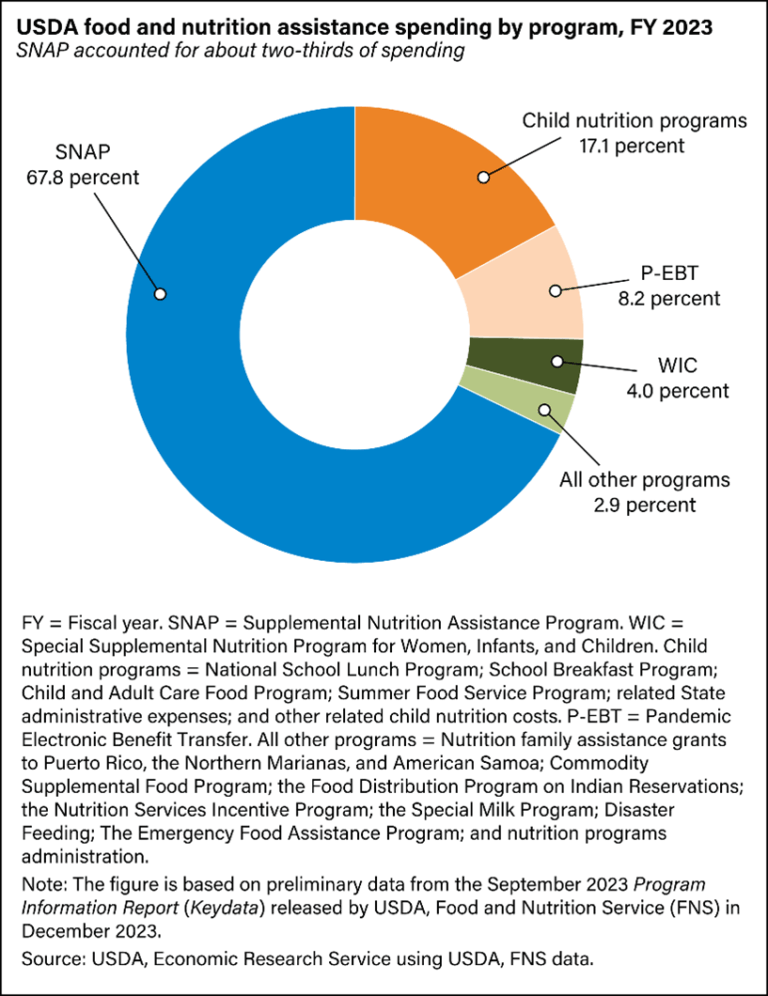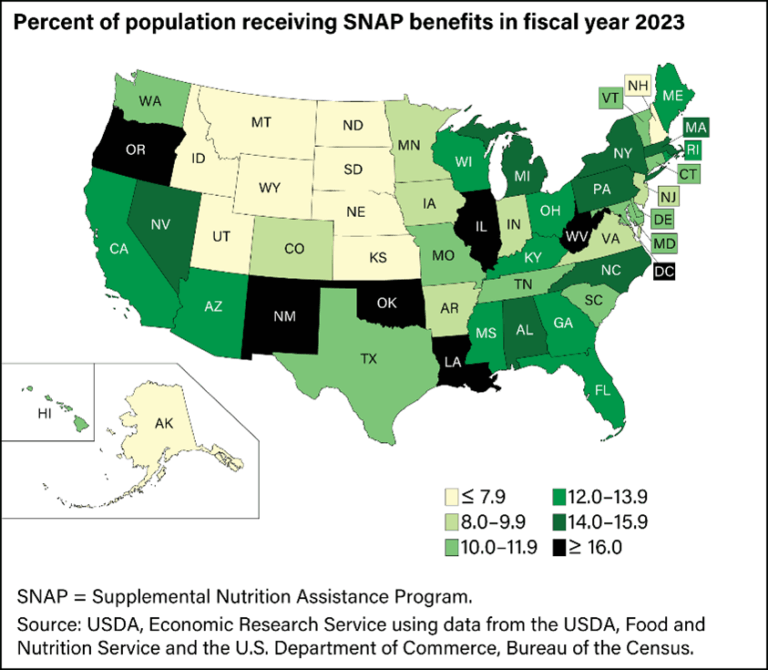Brooke Rollins: First 100 Days
The first 100 days in office not only mark the start of a new U.S. presidential administration but also serve as a critical checkpoint for newly appointed cabinet officials. In February 2025, Brooke Rollins became the 33rd U.S. Secretary of Agriculture, assuming leadership of the United States Department of Agriculture (USDA). In this role, she oversees policies that shape the nation's food and agriculture systems, including nutrition assistance programs, trade, rural development, and animal welfare. From day one, Rollins stepped into a complex landscape marked by an agricultural trade deficit, persistent labor shortages, particularly in specialty crops like fruit and produce, a delayed farm bill, and a widespread avian flu crisis. As USDA chief, Rollins manages 100,000 employees across various agencies and offices and an annual budget of over $200 billion. Let’s take a closer look at her early policy objectives and the pressing challenges facing U.S. agriculture today.
Egg-streme Measures: Rollins Scrambles to Contain Avian Flu Crisis
One of the first manure storms sliding across Secretary Rollins’ desk was the Avian flu crisis, with more than 168 million birds affected and causing egg prices to skyrocket. The initial outbreak began in 2024 and spread like wildfire across the United States as the highly contagious disease can spread easily. Unfortunately, if one bird is found to have the disease, then the entire flock must be slaughtered. As a result, the price of eggs has roughly tripled in just a year to a peak of $6.30 per dozen Grade A eggs in January 2025. USDA efforts have since brought egg prices down with a projected average price per dozen of $3.90 for the second quarter of 2025.
Secretary Rollins unveiled a five-point plan in an attempt to combat the Avian flu outbreak. The plan involves strengthening biosecurity measures, expediting relief to farmers for repopulation, reducing regulatory burdens, investing $100 million in Avian flu research and Vaccine Development, and looking at potential import partnerships with Turkey and South Korea. While the plan is substantial, some experts argue that this plan is more long-term in nature and will not provide as immediate relief to end consumers of chicken and eggs in the short run. It has been difficult to measure the overall effectiveness of the plan, as the U.S. was just entering what Secretary Rollins calls the "Super Bowl of Eggs"—Easter.
Let’s SNAP to It
Many people don’t realize that nutrition assistance programs operate under the purview of the USDA. The first food stamp program began in 1939 in the aftermath of the Great Depression and has since evolved into a $112.8 billion program titled the Supplemental Nutrition Assistance Program (SNAP). In total, the U.S. spends roughly $166.4 billion on food and nutrition assistance programs, including SNAP, school lunch programs, the Special Supplemental Nutrition Program for Women, Infants, and Children (WIC), and other nutrition programs. The state of Illinois has some of the highest utilization rates, with more than 16% of the population within the state receiving SNAP benefits.

Source: USDA

Source: USDA
Secretary Rollins has called for a revaluation of SNAP, as the program grew 20-30% under the Biden administration. It is important to note, however, that it is unclear whether this growth is attributed to an expansion of benefits or increased food insecurity issues during the COVID-19 Pandemic. Rollins has voiced concerns over the use of SNAP benefits by illegal immigrants and has called for enhanced identification and immigration verification in determining eligibility. Another goal of the new Secretary is reforming SNAP consistent with Health and Human Services Secretary Robert Kennedy Jr.’s “Make America Healthy Again” movement by common-sense restrictions on SNAP benefits for sugary items such as ice cream, soda, and prepared dessert items. 11 states have proposed banning these sweet treats from SNAP benefits. This ban has been proposed several times over the years and even during Trump’s first term. The first time around, Trump denied a waiver to restrict sugary items because of the high cost to administer the program.
Cutting out sweets comes on the heels of a proposed $230 billion cut to the USDA’s total operating budget over ten years by House Republicans. The Senate has proposed a $1 billion cut, with the majority targeting supplemental nutrition programs. Currently, nearly 13% of the population relies on these programs, and critics argue the cuts could disproportionately impact the most vulnerable, particularly women and children. With food prices continuing to rise, there is growing concern that these cuts could further strain marginalized communities. Still, in an era of budget tightening and heightened scrutiny of the federal deficit, some argue that such reductions may be necessary to ensure the long-term financial viability of USDA programs. Secretary Rollins has said she is currently working with the Department of Government Efficiency, DOGE, to find ways to reduce costs and increase operational efficiency of all USDA programs, with SNAP being the most logical place to look for inefficiencies.
Grain of Truth: Who’s Really Steering the Trade Ship?
It is no secret that the U.S. Agriculture sector is currently facing challenges from the Trump administration's tariff measures. In our last insight, we examined the current but ever-changing landscape of agricultural trade in the United States. Current tariff measures could have a substantial impact on the demand for U.S. crops. While a majority of these conversations have been led by President Trump, Secretary Rollins has said she supports these measures in what she calls an effort to “Save America.” Rollins stated in a CNN interview that Americans have been “living under” the import tariffs and embargoes of U.S. products and services by China and that the European Union’s “fake science” has kept U.S. pork and beef out of European countries. When asked about the permanency of these tariffs, she stated that Trump “is the ultimate dealmaker.”
This year, Secretary Rollins is set to visit several key trading partners—including Vietnam, Japan, India, Peru, Brazil, and the United Kingdom—as part of USDA’s global trade mission, which also includes destinations like Hong Kong, the Dominican Republic, Taiwan, Côte d’Ivoire, and Mexico. These visits come at a time when the U.S. is working to address large trade deficits with India ($1.3 billion) and agricultural powerhouse Brazil ($7 billion) and facing high tariffs and limited market access in the UK. Japan remains a vital market for major U.S. commodities, but competition from other exporting countries has intensified, making it harder for U.S. products to maintain market share. Vietnam, the U.S.’s tenth-largest agricultural export market, does not have a formal trade agreement with the U.S., which puts American exporters at a disadvantage compared to countries like China that have more favorable trade terms. Meanwhile, Peru offers strong growth potential, particularly in ethanol, dairy, meat, and specialty crops.
Critics argue that while these trade missions aim to diversify U.S. agricultural exports, it doesn’t sufficiently address the immediate challenges faced by American Farmers, such as low commodity prices, high financing costs, and labor shortages. Secretary Rollins stated on April 30th in an interview with Fox News that the Trump administration is preparing a potential financial assistance program for farmers adversely affected by trade wars, though she hopes it won’t be necessary as the U.S. focuses on expanding agricultural exports to reduce dependence on China. During Trump’s first term, a similar trade war with China led to $28 billion in direct payments for farmers as a result of low commodity prices from the decreased demand.
The Road Ahead for Secretary Rollins
Amidst all the uncertainty in the U.S. agricultural space, Secretary Rollins has repeatedly assured farming communities that rural America is a top priority of the USDA and President Trump. In her first 100 days, Rollins has tackled everything from rising egg prices to reforming SNAP and mixing it up in the complex world of trade. While her proposals have generated both praise and criticism, what’s clear is that she heads a strategically and politically important sector of the U.S. economy—one with high future expectations, limited budgetary resources, excluding SNAP, and growing public scrutiny. Whether Rollins can deliver meaningful change remains to be seen, but one thing is certain: the next 100 days may be even more defining than the first.
